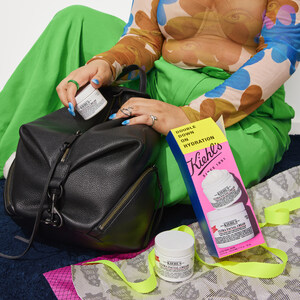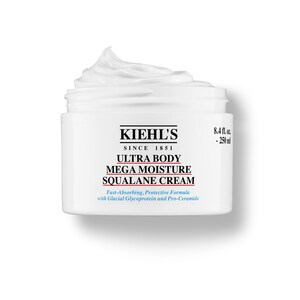Reversing UV Damage is Consumer's Top Post-Summer Skincare Concern
Achieve Healthier, Younger-Looking Skin with Five Tips from Leading Dermatologist, Dr. Adam Geyer
NEW YORK, Aug. 26 /PRNewswire/ -- With Labor Day fast-approaching and the summer sun almost a thing of the past, women and men across the United States will be in search of fall's must-have skin renewal system to repair and reverse UV damage. According to Dr. Adam Geyer, Kiehl's Since 1851 Consulting Dermatologist, and instructor in clinical dermatology at Columbia University in New York City, "When tans fade, people start to see the remnants of summer, including dark spots, uneven skin tone, blotchiness, and fine lines and wrinkles, and that is just what's on the skin's surface. Under the surface there is invisible damage that can and will manifest into what is seen on the upper layer of the dermis."
(Photo: http://photos.prnewswire.com/prnh/20100826/NY55404 )
(Photo: http://www.newscom.com/cgi-bin/prnh/20100826/NY55404 )
Treating photo-damage (due to UV damage, acne scarring, aging, hormonal changes and lack of moisture) takes diligence, and when seeking products to address hyperpigmentation, three key concerns include blocking the melanin production, disabling the melanin transfer, and lastly, blocking melanin retention. This September, Kiehl's will introduce Photo-Age Corrector (http://www.kiehls.com/Photo-Age/face-photo-age,default,sc.html) a range of four products, clinically proven to reveal healthier, brighter skin, reverse dark spots and even out overall discoloration in as little as four weeks. Targeting major melanin triggers with safe, natural and effective skin brighteners, use of the Photo-Age Corrector High-Potency Spot Treatment as part of a daily routine will maximize the results—smoother, more radiant, and even-toned skin—by lessening visible sun spots, as well as regulating the future production of pigment, and therefore invisible damage that is beginning to form below the skin's surface.
Although post-summer is the ideal opportunity to kickoff skin's repair process, a year-round preventative approach is key. "With effective anti-melanin formulas, it's possible to lighten spots, but if your skin faces repeated exposure, they will come back," says Geyer. "Consistent photo-protection is the corner stone to maintaining an evenly toned complexion." Dr. Geyer's top five tips to prevent and repair excess pigmentation year-round, include:
1. Protect. Protect. Protect. Since UV light is the #1 cause of uneven skin tone, be diligent about incorporating a broad spectrum sunscreen into your skincare routine 365 days a year—not just when at the beach.
2. Exfoliate nightly. Sloughing away skin's top, dead skin cells has a stimulatory effect on skin and decreases retention of unwanted pigment in the epidermis. It also allows the active ingredients in products applied afterwards to penetrate deeper and work more efficiently in reversing brown spots.
3. Use antioxidants as a second layer of protection. Products laced with powerful antioxidants such as vitamin C are a great addition to your morning skincare routine. This particular antioxidant is able to effectively neutralize free radicals to help decrease pigmentation.
4. Be cautious of some chemical-based skin lighteners. If you're using a hydroquinone-based product (a prescription-only chemical skin lightener), care should be taken when applying this ingredient to avoid developing a reverse reaction, known as hypo pigmentation (an over-lightening of the skin). Prevent this from happening by only using a small amount directly on the affected area.
5. Be patient: There is no lightening fast fix! Fading of brown spots takes months, as the skin must go through several renewal processes. Stick with a proven anti-pigmentation regimen to see results and even consider taking some pre-treatment pictures to monitor how much your complexion is beginning to even out.
SOURCE Kiehl's Since 1851
WANT YOUR COMPANY'S NEWS FEATURED ON PRNEWSWIRE.COM?
Newsrooms &
Influencers
Digital Media
Outlets
Journalists
Opted In





Share this article